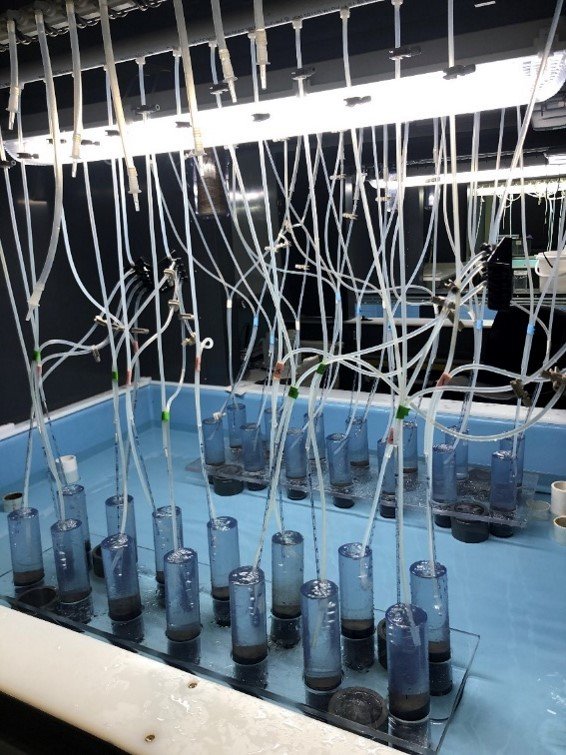Environmental RNA: A Powerful Tool for Studying Biodiversity
Published May 4, 2023
Estuaries are important habitats for many different types of fish, birds, shellfish, seagrasses, and more –including living creatures too small to see with the naked eye. These small organisms are often the basis of food webs and critical to a well-functioning estuary. They can pose a challenge, however, when scientists study biodiversity, or the variety of organisms in an environment, because they’re often hard to identify, even under a microscope.

To better understand biodiversity in estuaries and other marine habitats, EPA scientists are using novel techniques, such as “metabarcoding,” to identify organisms without having to resort to microscopes. With metabarcoding, scientists can identify organisms based on the genetic sequences they find in any given environmental sample.
The Power of Metabarcoding: eDNA vs. eRNA
Usually, metabarcoding analyses are done using environmental DNA (eDNA). eDNA analysis uses genetic material in environmental samples, such as water or sediment, to identify organisms. Although this method is great at detecting a wide variety of different organisms in the environment, it is difficult to distinguish between organisms that are in the environment at the time of sampling and organisms that aren’t there anymore. This is because legacy DNA can be left in the environment by organisms after they have died or moved on. Legacy DNA can make the analysis less accurate and provide a false picture of biodiversity at the time of sampling. In contrast, using environmental ribonucleic acid (eRNA) molecules during laboratory analysis can be a powerful tool for studying an environment’s current biodiversity. This is because RNA is actively produced by living organisms and degrades a lot faster in the environment than DNA.
“eRNA doesn’t persist in the environment as long as eDNA, so it is a useful tool for studying biodiversity and communities of marine organism,” explained Marissa Giroux, lead author of the paper. “eRNA is great at giving us a snapshot of living organisms present at the time of sampling, compared to DNA which detects past and present organisms in the sample.”
Studying Life in the Mesocosm

In a recent study, EPA scientists set up several experimental habitats called “mesocosms," in the EPA laboratory in Narragansett, R.I. Mesocosms are experimental systems designed to simulate the natural environment under tightly controlled conditions indoors. The scientists populated the mesocosms with sediment cores collected near Narragansett. They sampled eDNA and eRNA from those mesocosms and determined that greater species richness, or a higher number of unique organisms, was found within each mesocosm when using eRNA as a template for metabarcoding versus using eDNA. They also found that the eRNA samples provided a more accurate picture of the microscopic community living in an area at a precise moment in time. This study is the first to demonstrate differences detected with eRNA compared to eDNA from real estuarine communities and shows how eRNA can be used as a tool for understanding diversity of organisms in sediments and estuaries.
“eRNA metabarcoding is one tool that we can use to measure how aquatic communities and biodiversity change over time due to pollution or climate change,” Giroux said. “We will be able to learn so much more about microscopic communities that play major roles in marine food webs but have been difficult to study in the past.”
Giroux and her co-authors on this study hope that further development of eRNA metabarcoding will advance knowledge of interactions within the food web, ecosystem responses to pollution and climate change, and identification of understudied organisms, resulting in more comprehensive management of marine systems.
Learn more about this study in the published research paper: Environmental RNA as a Tool for Marine Community Biodiversity Assessments.
This article was written by Danielle Moore, an Oak Ridge Associated Universities contractor working in EPA’s Office of Research and Development.
